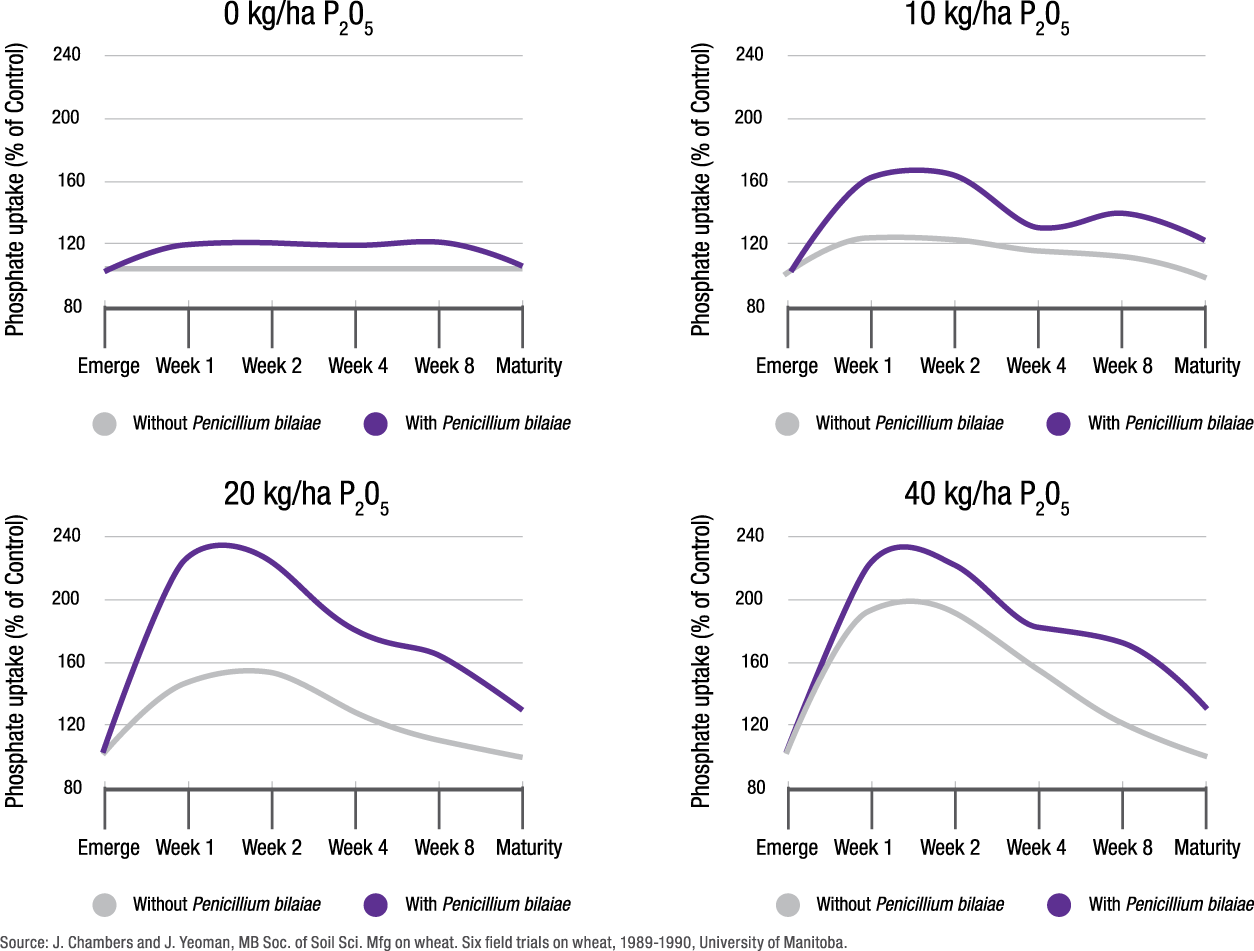Phosphate is essential for plant health, particularly for crops that rely on biological nitrogen fixation like lentils and peas. However, phosphate availability is often limited due to soil fixation and its immobility.
Factors Limiting Phosphate Availability
Phosphate availability in soil can be restricted by:
-
High levels of calcium, magnesium, iron or aluminum that bind phosphate
-
High clay content
-
Cold or dry soils reduce microbial activity and root uptake
Even when applied, up to 90% of phosphate fertilizer can be bound in soil in the year of application, with at least 25% never becoming available to the plant.
Why Phosphate Matters
Phosphate supports:
-
Energy transfer from photosynthesis to roots
-
Root development and early plant vigour
-
Nodule formation and nitrogen fixation in legumes
-
Early and even maturity across crop types
Phosphate and Nitrogen Fixation
For pulse crops, phosphate is critical in enabling nodulation and nitrogen fixation:
-
Energy source used in the nitrogen fixation process
-
Supports nodulation and the development of larger, more active nodules
-
Without adequate phosphate, nitrogen fixation and yield are compromised
Role of Penicillium bilaiae and Biological Inoculants
Penicillium bilaiae is a beneficial soil fungus that enhances phosphate uptake by:
-
Solubilizing bound phosphate with the production of organic acids
-
Working under a wide range of pH and soil temperatures
-
Increasing root hairs and shoot growth
Products like BioniQ®, TagTeam®, TagTeam® BioniQ® and JumpStart® use Penicillium bilaiae to increase phosphate availability throughout the season. These products are especially helpful in cold soils or when low rates of phosphate are used due to crop sensitivity when fertilizer is placed with the seed.
Other biologicals like Bacillus amyloliquefaciens and Trichoderma virens also contribute by improving nutrient availability and promoting plant growth.
Crop-Specific Considerations
Canola
-
Needs phosphate within a week of germination
-
Sensitive to high seed-placed rates of fertilizer (maximum amount with seed 25 lbs. P₂O₅/ac)
-
BioniQ® improves early phosphate access, uniformity, and pod formation
Peas and Lentils
-
Require 22–27 lbs. P₂O₅/ac for a 30 bu/ac crop
-
Sensitive to seed-placed fertilizer; biologicals support early vigour and nitrogen fixation
Wheat
-
Benefits from improved phosphate uptake for early tillering and uniformity
-
BioniQ® provides multiple mechanisms for phosphate solubilization and increased uptake
Phosphate Fertilizer Efficiency
Biologicals enhance fertilizer use efficiency by making more applied phosphate accessible during the growing season, addressing limitations in early growth stages.
Penicillium bilaiae increases the availability of phosphate, resulting in increased uptake by the plant
Research data from the University of Manitoba graphed below, shows the increase in uptake of phosphate throughout the growing season when using Penicillium bilaiae on wheat.

